It looks like you're using an Ad Blocker.
Please white-list or disable AboveTopSecret.com in your ad-blocking tool.
Thank you.
Some features of ATS will be disabled while you continue to use an ad-blocker.
11
share:
I was considering adding this info to the The Great Lakes And The Kongo Links To Nile Valley Civilizations
www.abovetopsecret.com... thread but decided against it as we can focus on Kerma and the
Nile in general
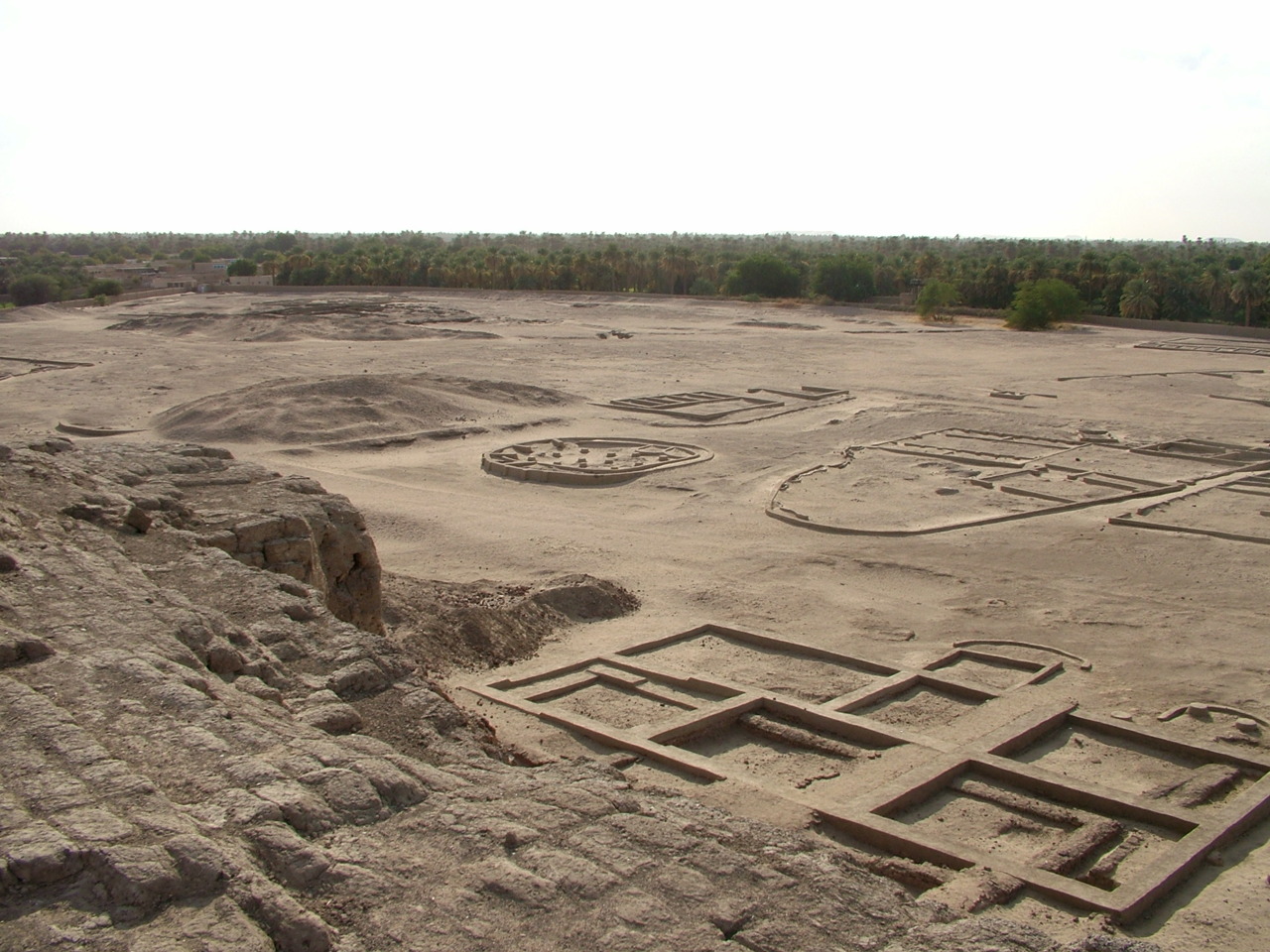
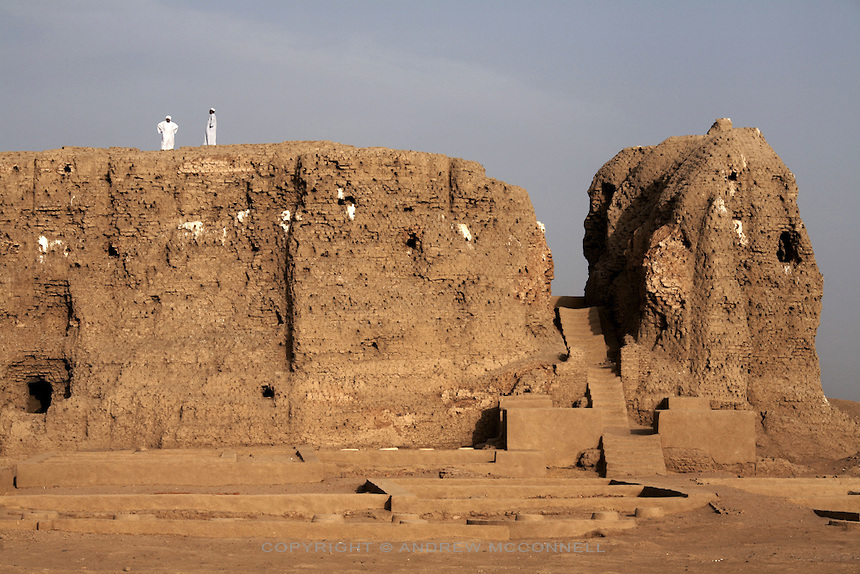
Kerma captial of Kush
That polities in areas south of Kmt trailed behind them in urban development is a myth the Kermans aka Kush have urban development going back 5000yrs B.C where they settled on a mixed economy of pastoralism and agriculture ,these folks are not to be confused with the people of Ta-Seti the 1st organized state on the Nile which became Kmt's first nome or lower Nubia going back to 3400 B.C although they would eventually absorb Ta-Seti,these were Kmt's arch rivals and every bit as ambitious as the Kemities their second oldest city is on Sai Island at about 4500 b.C ,the site is littered with ruins from the earliest times all the way down to the time of the occupation of the Ottoman Turks

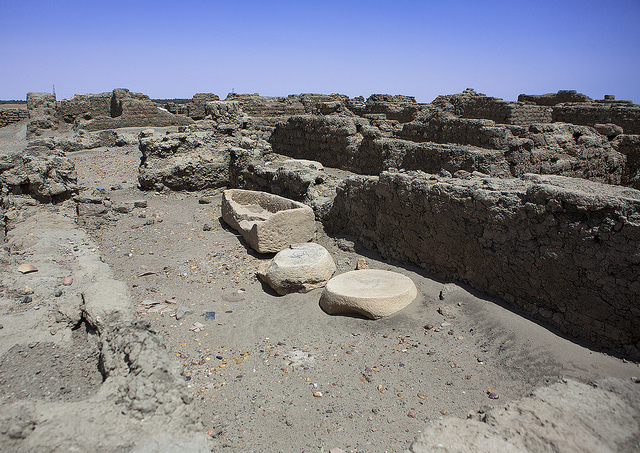
Temple ruins Sai Island
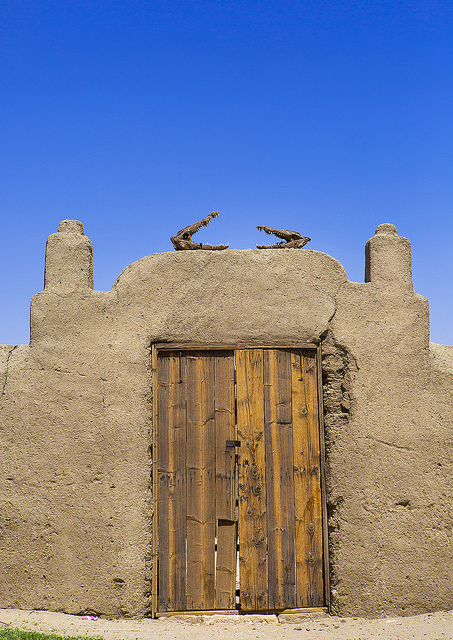
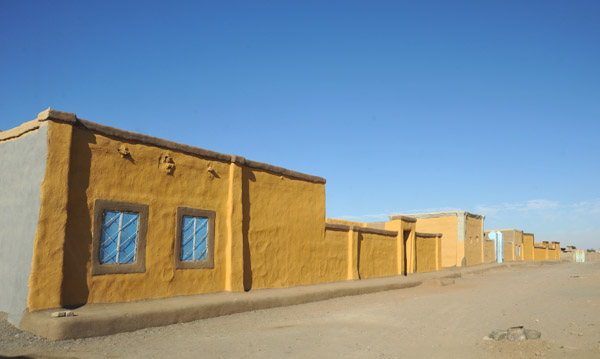
Crocodiles Heads On A Door, Sai Island
Notice these are adobe structures except for the Temple,
The language of the Kush is said to be Nilo-Saharan while the language of the Ta-Setians and the Kemites were Afrasian but all three groups had similar culture and institutions based on their common experience in the wet phase Sahara.
Relations with Kmt as was said earlier can be testy at times although trade relations continued even in difficult times.
XII Dyn
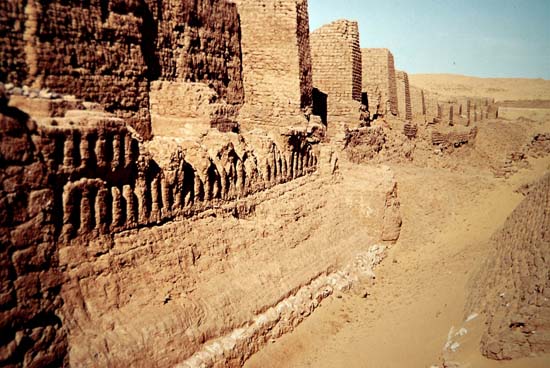
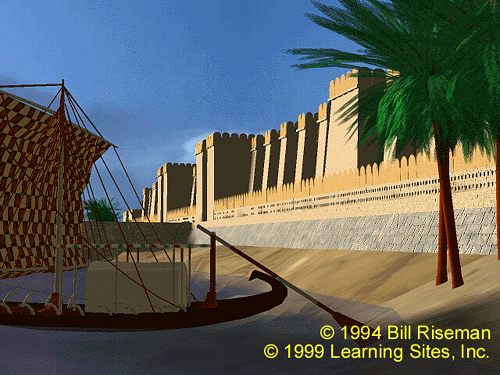
Many have taken this ban or controlled border crossings and building the very impressive Buhen fortress as evidence that the Kemites were engaged in a racist conflict with the Kush or "Nubians".. absolute nonsense nothing could be further from the truth for the 11th and 12th dyn royals were as close as one can get to be "Nubian" without being from "Nubia".. One of it's kings actually styled himself as son of the first born Nehsy his high royal wives were of Nehsy extraction in any case it was his/their job to protect their people the kemites no matter their ancestry say like any American POTUS would, be they of German,Irish,British or Kenyan ancestry.
One point before I move on 11th and 12th dyn royals were not of Kushetie extraction they most likely belonged to old line Ta-seti or Medjay extraction who were Afrasian speakers rather than Nilo-Saharans.
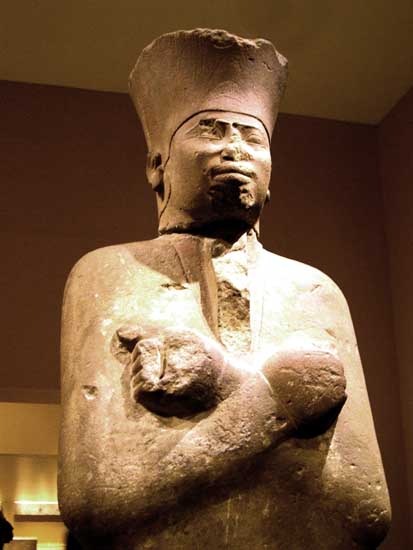
Nebhepetre Mentuhotep II
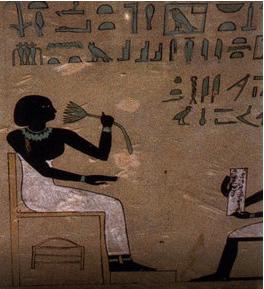
Princess Ahaslit daughter of Mentuhotep II
Kush invasion of Kmt
www.dailytimes.com.pk...


Kerma captial of Kush
That polities in areas south of Kmt trailed behind them in urban development is a myth the Kermans aka Kush have urban development going back 5000yrs B.C where they settled on a mixed economy of pastoralism and agriculture ,these folks are not to be confused with the people of Ta-Seti the 1st organized state on the Nile which became Kmt's first nome or lower Nubia going back to 3400 B.C although they would eventually absorb Ta-Seti,these were Kmt's arch rivals and every bit as ambitious as the Kemities their second oldest city is on Sai Island at about 4500 b.C ,the site is littered with ruins from the earliest times all the way down to the time of the occupation of the Ottoman Turks


Temple ruins Sai Island


Crocodiles Heads On A Door, Sai Island
Notice these are adobe structures except for the Temple,
The language of the Kush is said to be Nilo-Saharan while the language of the Ta-Setians and the Kemites were Afrasian but all three groups had similar culture and institutions based on their common experience in the wet phase Sahara.
Relations with Kmt as was said earlier can be testy at times although trade relations continued even in difficult times.
XII Dyn
This dynasty ranks as among the greatest, whose fame far outlived its actual tenure on the throne. Especially interesting, it was a member of this dynasty- that decreed that no Nehsy (riverine Nubian of the principality of Kush), except such as came for trade or diplomatic reasons, should pass by the Egyptian fortress at the southern end of the Second Nile Cataract. : egyptsearchreloaded.proboards.com...


Many have taken this ban or controlled border crossings and building the very impressive Buhen fortress as evidence that the Kemites were engaged in a racist conflict with the Kush or "Nubians".. absolute nonsense nothing could be further from the truth for the 11th and 12th dyn royals were as close as one can get to be "Nubian" without being from "Nubia".. One of it's kings actually styled himself as son of the first born Nehsy his high royal wives were of Nehsy extraction in any case it was his/their job to protect their people the kemites no matter their ancestry say like any American POTUS would, be they of German,Irish,British or Kenyan ancestry.
One point before I move on 11th and 12th dyn royals were not of Kushetie extraction they most likely belonged to old line Ta-seti or Medjay extraction who were Afrasian speakers rather than Nilo-Saharans.

Nebhepetre Mentuhotep II

Princess Ahaslit daughter of Mentuhotep II
Kush invasion of Kmt
Mr Davies, who headed the joint British Museum and Egyptian archaeological team, said: “Now it is clear that Kush was a superpower which had the capacity to invade Egypt. It was a huge invasion, one that stirred up the entire region, a momentous event that is previously undocumented. “They swept over the mountains, over the Nile, without limit. This is the first time we’ve got evidence. Far from Egypt being the supreme power of the Nile Valley, clearly Kush was at that time. “Had they stayed to occupy Egypt, the Ku#es might have eliminated it. That’s how close Egypt came to extinction. But the Egyptians were resilient enough to survive, and shortly afterwards inaugurated the great imperial age known as the New Kingdom. The Ku#es weren’t interested in occupation. They went raiding for precious objects, a symbol of domination. They did a lot of damage.”
The inscription describes a ferocious invasion of Egypt by armies from Kush and its allies from the south, including the land of Punt, on the southern coast of the Red Sea. It says that vast territories were affected and describes Sobeknakht’s heroic role in organising a counter-attack. The text takes the form of an address to the living by Sobeknakht:“Listen you, who are alive upon earth . . . Kush came . . . aroused along his length, he having stirred up the tribes of Wawat . . . the land of Punt and the Medjaw. . .” It describes the decisive role played by “the might of the great one, Nekhbet”, the vulture-goddess of El Kab, as “strong of heart against the Nubians, who were burnt through fire”, while the “chief of the nomads fell through the blast of her flame”. The discovery explains why Egyptian treasures, including statues, stelae and an elegant alabaster vessel found in the royal tomb at Kerma, were buried in Ku#e tombs: they were war trophies.
www.dailytimes.com.pk...
Incredible post. I always admire your post because I know they are true. Great information, beautiful pictures also. I watched a documentary once,
and part of it was about the indigenous people being 'forced' by the government to move because of a new dam. From the outside looking it looked
like a peaceful project. But, the locals told a different story. It was said the damn was built directly over an archaeological site that was yet to
be unearthed and studied. This site was said to be a very critical site that would've offered vital information about Kush. It looked like it was
documented in the 90's and there was talks about them building another dam, here's the coincidence, it was to be built on top of another site.
Thanks for the info. Keep posting things about Kemet, Kush and the other many other hidden "African" relics.
Thanks for the info. Keep posting things about Kemet, Kush and the other many other hidden "African" relics.
reply to post by Spider879

The New Kingdom Pharaohs put an end to Kush.i.te menace for the time being Kerma was colonized the help of these guys the Medjay
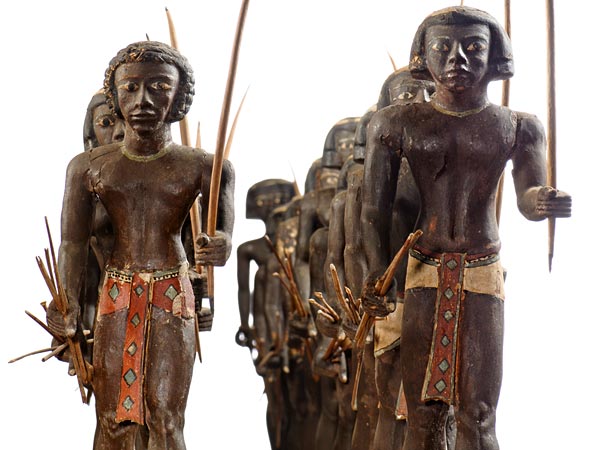
Medjay traditional allies of Kmt back bone of the Kemitian forces during the 17th and 18th restoration dynasties
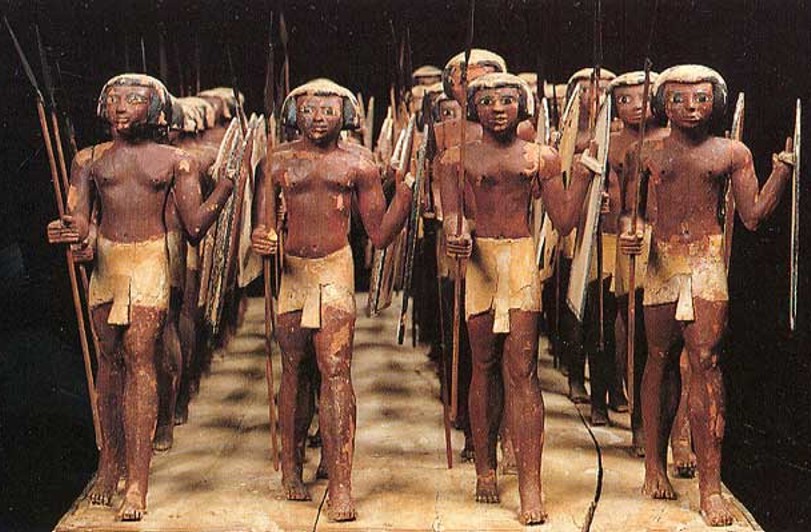
Kemetian spearmen along with their Madjay archers beat back the threat from Kush and Hyksos allies of Kush
Kamose
At wars end in the following dynasties Kush's princely sons were taken to be educated in Kemitian ways and sent back to rule in the name of Pharaoh as the prince son of Kush an important title and role relations were generally good Kush adopted Kemetian customs and played nice right up till the time of Ramses XI
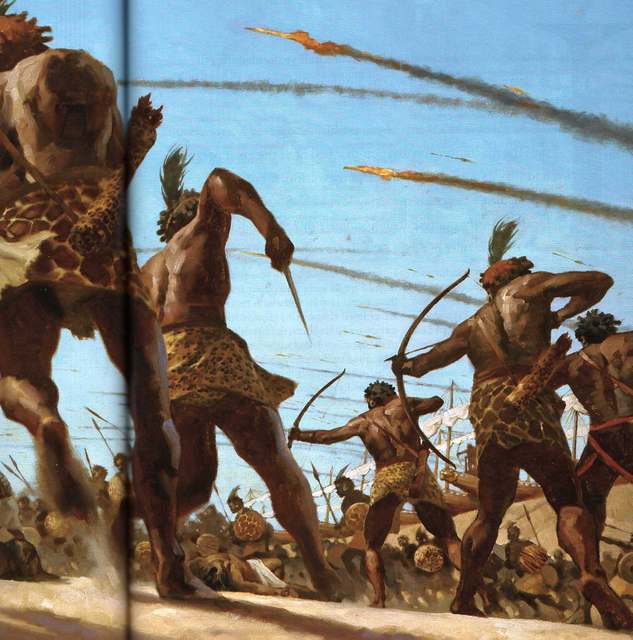
Year Of The Hyenas

Shortly there after Kush would broke away in 950 B.C and became independent once again, in 750 B.C they would march on kmt under Kashta who took parts of upper Kmt this was followed by an appeal to Piankhy his son by Kemitian loyalist to oust the Libyans who had taken power since they had control of Jebel Barkal in their land the home of Amun where at-least New Kingdom pharaohs were crowned they were seen as legitimate pharaohs and up holders of tradition.

The New Kingdom Pharaohs put an end to Kush.i.te menace for the time being Kerma was colonized the help of these guys the Medjay

Medjay traditional allies of Kmt back bone of the Kemitian forces during the 17th and 18th restoration dynasties

Kemetian spearmen along with their Madjay archers beat back the threat from Kush and Hyksos allies of Kush
Kamose
I should like to know what serves this strength of mine, when a chieftain in Avaris, and another in Kush, and I sit united with an Asiatic and a Nubian, each in possession of his slice of Egypt, and I cannot pass by him as far as Memphis... No man can settle down, when despoiled by the taxes of the Asiatics. I will grapple with him, that I may rip open his belly! My wish is to save Egypt and to smite the Asiatic!"
en.wikipedia.org...
At wars end in the following dynasties Kush's princely sons were taken to be educated in Kemitian ways and sent back to rule in the name of Pharaoh as the prince son of Kush an important title and role relations were generally good Kush adopted Kemetian customs and played nice right up till the time of Ramses XI

Year Of The Hyenas
Panehsy who was the viceroy of Nahasu, marched north with Ku#e troops, possibly at the request of Ramesses XI, to restore order in Thebes. However, whether he did so on behalf of the king or on his own seems questionable due to alter events, which might even indicate that the High Priest, Amenhotep, was perhaps, more under the control of Ramesses IX than might be otherwise evidenced. Apparently, in order to feed his men and perhaps even to help limit the power of the High Priest, Panehsy was either given, or perhaps usurped, the office of "overseer of the granaries". Obviously, this would have certainly brought him into conflict with the priesthood of Amun, for that temple owned the bulk of the land and its produce. This event escalated into a civil war, as, during a period of eight or nine months sometime between years 17 and 19 of Ramesses XI's reign, Paneshy besieged the high priest at the fortified temple of Medinet Habu. We do not know if the High Priest, Amenhotep, survived this attack, but strangely, he may have appealed to Ramesses XI for protection, which appears to have resulted in an even wider civil war. We are told that Paneshy marched north, reaching as far as Hardai in Middle Egypt, which he sacked. He may have even driven farther north, but his advance was eventually met by the king's army and he was driven back. Paneshy eventually had to retreat to Nahasu where he apparently caused trouble for some years before his death.
egyptsearchreloaded.proboards.com...

Shortly there after Kush would broke away in 950 B.C and became independent once again, in 750 B.C they would march on kmt under Kashta who took parts of upper Kmt this was followed by an appeal to Piankhy his son by Kemitian loyalist to oust the Libyans who had taken power since they had control of Jebel Barkal in their land the home of Amun where at-least New Kingdom pharaohs were crowned they were seen as legitimate pharaohs and up holders of tradition.
Originally posted by AKINOFTHEFIRSSTARS
Incredible post. I always admire your post because I know they are true. Great information, beautiful pictures also. I watched a documentary once, and part of it was about the indigenous people being 'forced' by the government to move because of a new dam. From the outside looking it looked like a peaceful project. But, the locals told a different story. It was said the damn was built directly over an archaeological site that was yet to be unearthed and studied. This site was said to be a very critical site that would've offered vital information about Kush. It looked like it was documented in the 90's and there was talks about them building another dam, here's the coincidence, it was to be built on top of another site.
Thanks for the info. Keep posting things about Kemet, Kush and the other many other hidden "African" relics.
Yes very sad indeed the same thing is about to occur as did in the 60ts with the Aswan high dam the people were removed far from the waters edge and the oldest artifacts and buildings is buried under the water if it wasn't for UNESCO we would know even less of ancient Nubia the kingdom of Ta-Seti would be completely unknown to us but for the rescue effort even the temple of Ramses would be under water,there is an appeal to save Nubian heritage and stop the building of the dam which unlike the case in Egypt many deem it unnecessary white elephant. but I don't know if links to political appeal on ATS is cool, my guess is it would not be for when and where would it end.
edit on 3-7-2013 by Spider879 because: (no reason
given)
reply to post by Spider879
And he heard say concerning Tirhakah king of Ethiopia, Behold he has come out to make war with thee; and heard, repeated, and sent messengers to Hizkiyahu.

Taharka among the last kings of the rapidly closing Bronze age,he has received favorable mention in the Bible the ancient Greeks counted him as among the great heroes of the world,in the book The Rescue Of Jerusalem by Henry T. Aubin he is credited with saving Jerusalem at a critical juncture for if not for him Judaism might have been crushed or looked very different.
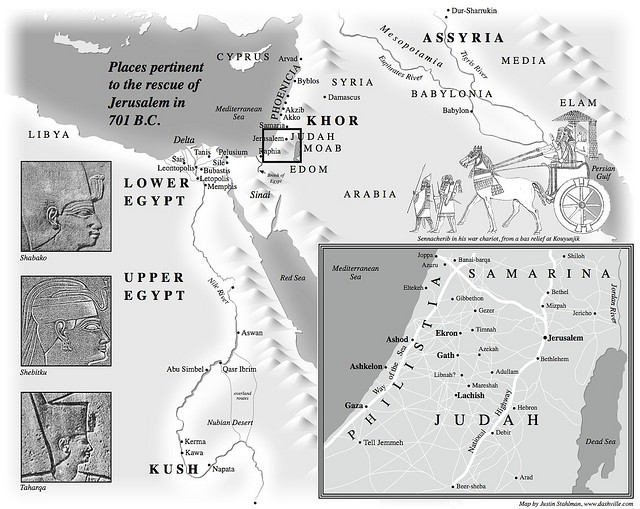
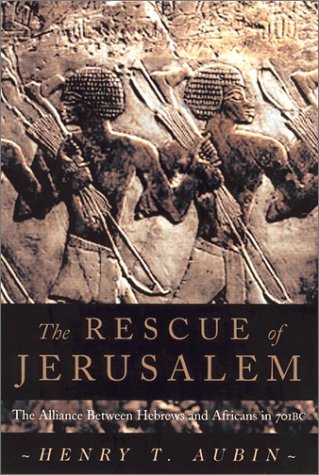
Note I had to edit the term Kush..ite in the quote to Kuchite because of auto edit.??
Sennacherib King Of Assyria
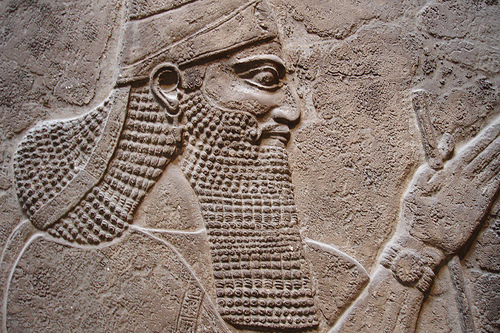
As one gathers eggs that have been abandoned in flight, so I have gathered the whole world.
War with the Assyrians hot and cold lasted about 50yrs till the Assyrians made a decisive victory and plundered Thebes aka Nowe cultural and religious capitol for the Nile valley people for thousands of yrs
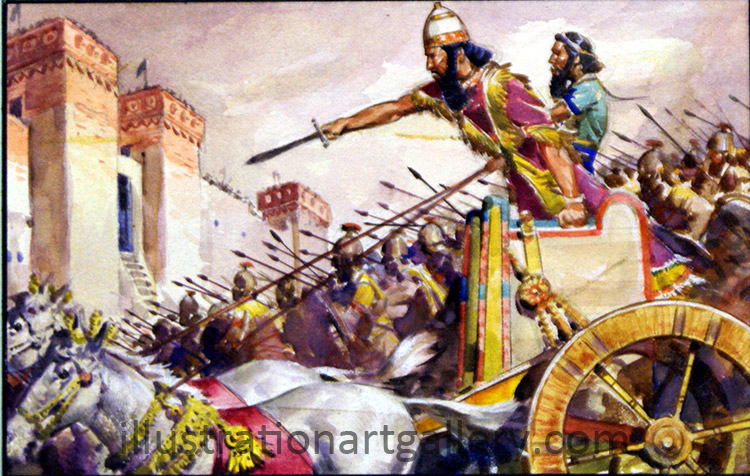
Iron weapons and heavy armor may have been the reason for the Assyrians winning the day it is reported that the Kush/Kemetian forces were using bronze swords that shattered against Assyrian Iron,after Kush retired from Kmt Iron became a major industry on the Nile and especially in the successor kingdom of Meroe,this war change the world in more ways than you can think.
Heaps of slag left by the extensive iron smelting works of ancient Meroe.

And he heard say concerning Tirhakah king of Ethiopia, Behold he has come out to make war with thee; and heard, repeated, and sent messengers to Hizkiyahu.

Taharka among the last kings of the rapidly closing Bronze age,he has received favorable mention in the Bible the ancient Greeks counted him as among the great heroes of the world,in the book The Rescue Of Jerusalem by Henry T. Aubin he is credited with saving Jerusalem at a critical juncture for if not for him Judaism might have been crushed or looked very different.


At the turn of the eighth century B.C., a mighty Assyrian army entered Judah and fought its way to the very gates of Jerusalem, poised, the prophet Isaiah warned, to "smash the city as easily as someone hurling a clay pot against the wall." But the assault never came; instead, the Assyrian army turned and fled, an event that has been called the Deliverance of Jerusalem. Whereas biblical accounts attribute the Assyrian retreat to divine intervention, journalist Henry Aubin offers an explanation that is miraculous in its own light: the siege was broken by the arrival of an army from Kuchite Egypt--an army, that is, made up of black Africans. These Kuchites figured in historical texts, Aubin continues, until the late 19th century, when racist scholars expunged them from the record--a process that, Aubin observes, coincided with the European conquest and colonization of Africa. The Kuchite intervention assured the survival of the Hebrew people, Aubin asserts, and it deserves to be acknowledged anew. Well-written and carefully developed, Aubin's argument will doubtless excite discussion.
www.barnesandnoble.com...
Note I had to edit the term Kush..ite in the quote to Kuchite because of auto edit.??
Sennacherib King Of Assyria

As one gathers eggs that have been abandoned in flight, so I have gathered the whole world.
War with the Assyrians hot and cold lasted about 50yrs till the Assyrians made a decisive victory and plundered Thebes aka Nowe cultural and religious capitol for the Nile valley people for thousands of yrs

Art thou better than populous No, that was situate among the rivers, that had the waters round about it, whose rampart was the sea, and her wall was from the sea?
Ethiopia and Egypt were her strength, and it was infinite; Put and Lubim were thy helpers.
Yet was she carried away, she went into captivity: her young children also were dashed in pieces at the top of all the streets: and they cast lots for her honourable men, and all her great men were bound in chains.
Iron weapons and heavy armor may have been the reason for the Assyrians winning the day it is reported that the Kush/Kemetian forces were using bronze swords that shattered against Assyrian Iron,after Kush retired from Kmt Iron became a major industry on the Nile and especially in the successor kingdom of Meroe,this war change the world in more ways than you can think.
Heaps of slag left by the extensive iron smelting works of ancient Meroe.

edit on 3-7-2013 by Spider879 because: clean-up
The Legacy
The Memphite theology and the Shabaka stone is regarded as one of the most important cosmological text to come down to us from the ancients many here would recognize parallels with creation stories of the Bible example In the beginning was the Word, and the Word was with God, and the Word was God The Word became flesh and made his dwelling among us. We have seen his glory, the glory of the one and only Son, who came from the Father, full of grace and truth.
www.biblegateway.com...

Ptah
Societies like the Masons held it in high regards because of it link to Ptah the divine architect of the universe.
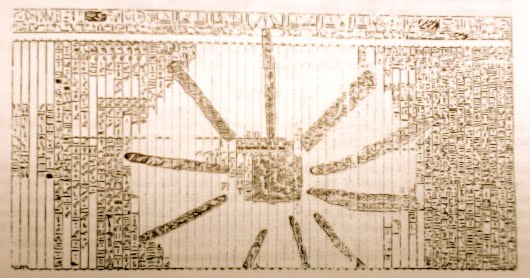
Shabaka.
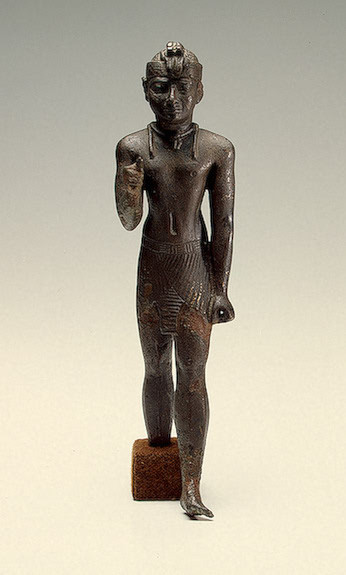
maat.sofiatopia.org...
The Memphite theology and the Shabaka stone is regarded as one of the most important cosmological text to come down to us from the ancients many here would recognize parallels with creation stories of the Bible example In the beginning was the Word, and the Word was with God, and the Word was God The Word became flesh and made his dwelling among us. We have seen his glory, the glory of the one and only Son, who came from the Father, full of grace and truth.
www.biblegateway.com...
Line 55 of the Shabaka Stone supports Mercer’s assertion, and reveals that Ptah creates by divine word. It says, “His (Ptah’s) Ennead is before him as teeth and lips. They are the semen and the hands of Atum. For the Ennead of Atum came into being through his semen and his fingers. But the Ennead is the teeth and lips in this mouth which pronounced the name of every thing.
bible.org...

Ptah
Societies like the Masons held it in high regards because of it link to Ptah the divine architect of the universe.

Shabaka.

"The living Horus : excellent Two Lands ; the Two Ladies : excellent Two Lands ; the Golden Horus : excellent Two Lands ; King of Upper and Lower Egypt : Neferkare, the son of Re, [Shabaka], beloved of Ptah-South-of-his-Wall, who lives like Re forever.
This writing was copied out anew by his Majesty in the House of his father Ptah-South-of-his-Wall, for his Majesty found it to be a work of the ancestors which was worm-eaten, so that it could not be understood from the beginning to the end. His Majesty copied it anew so that it became better than it had been before, in order that his name might endure and his monument last in the House of his father Ptah-South-of-his-Wall throughout eternity, as a work done by the son of Re [Shabaka] for his father Ptah-Tatenen, so that he might live forever."
maat.sofiatopia.org...
edit on 4-7-2013 by Spider879 because: TEXT
You present your information very well. Its amazing how you have so many "ats experts" on this particular region, that will debate you with those
tired 1800 facts until sunrise. Its amazing to see that none of them are interested in this.....
Originally posted by AKINOFTHEFIRSSTARS
You present your information very well. Its amazing how you have so many "ats experts" on this particular region, that will debate you with those tired 1800 facts until sunrise. Its amazing to see that none of them are interested in this.....
Hi AKINOFTHEFIRSSTARS thanks for the support I am really not looking for confrontation just disseminating information,I am well aware that although the info I presented in this and other threads/post is widely available not everyone had really looked into it, most of the time my detractors have a knee-jerk reaction not because they want to be mean but because they haven't looked at the info or they end up relying on outdated concepts and data.
Another thing is labeling, when most of my detractors looked at the history of Africa/Africans and their descendants they do so as someone looking in from the outside rather than someone from the inside looking out, for when I tell tell the story of the African from that angle I will be labeled an Afro-centrist which carries a negative connotation for most and will be dismissed, even in the realm of theories/ hypotheses and journy into the impossible the African have no place, example If I made a thread about ancient African pre-Colombian contacts folks will get enraged and I will be labeled but someone else made a thread about St. Brendon's possible voyage to the America's then such intellectual exercise is good only waiting for confirmation of data, but the mariner king of Mali Abubakari of which we have two separate written sources plus oral traditions is labeled Afrocentrism and will be summarily dismissed. I hope I am made of sterner stuff and not give up telling these stories from my perspective. Btw there are some here who do not hate but appreciate shout out to them.
edit on 6-7-2013 by Spider879 because: Make a correction
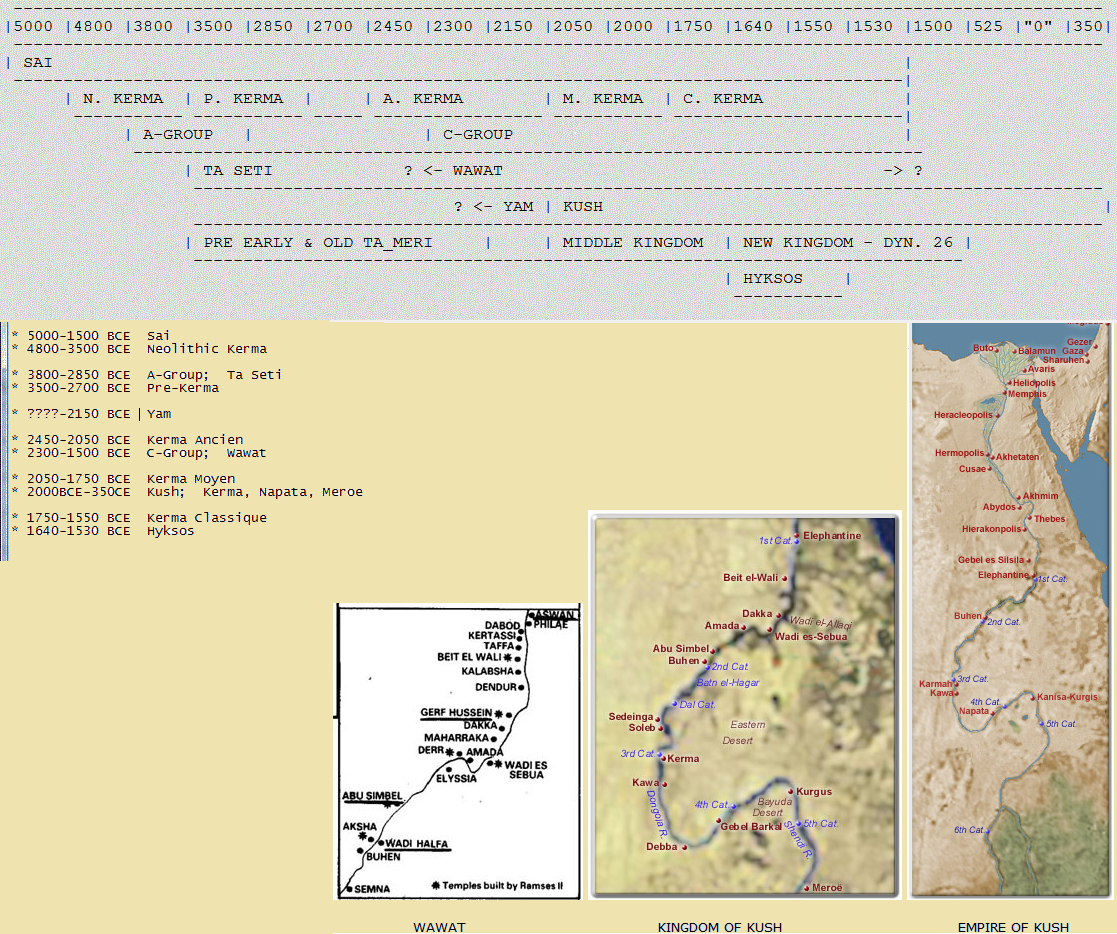
* (3800-2850 BCE) A-Group
* (2300-1500 BCE) C-Group
* (????-2150 BCE) Yam
* (4800-3500 BCE) Neolithic Kerma
* (3500-2700 BCE) Pre-Kerma
* (5000-1500 BCE) Sai
* (2450-2050 BCE) Kerma Ancien
* (2050-1750 BCE) Kerma Moyen
* (1750-1550 BCE) Kerma Classique
* (1640-1530 BCE) Hyksos
* (2000BCE-350CE) Kush (Kerma, Napata, Meroe)
egyptsearchreloaded.proboards.com...
Update on this thread with maps of the different political entities south of Kemet and their eventual union under Kush the superpower that stretched from the confluence of the Blue and White Nile to Megiddo in the Levant .
Wawat was a breakaway state after Ta-seti came under the political control of kings like Scorpion and Narmer aka catfish
Wawat. The state
known as the conspirators.
TaSeti once extended from Nag el Hasaya, Edfu in what became T3wy's
2nd sepat (nome), to the Batn el Hagar (just above the 2nd cataract)
------------------------------------------------------------------------------------------------------------------------------------------------------
Yam The State
Yam may've began just south of the Batn el Hagar and was the next state
above Wawat. Sai may've been a northern polity under Yam. Yam probably
extended as far as the 4th cataract judging from the fact that "Ancient
Urban Kerma" artifacts have been unearthed from the 3rd to at least the
4th cataracts. At this period in time Kush was the next territory upriver.
------------------------------------------------------------------------------------------------------------------------------------------------------ -------------------
The point of the above is we have to look at the other states on the Nile as we would for the different states and Political entities in Mesopotamia or Meso-America and not as one amorphous mass,that's why I refused to use the term "NUBIA" and "NUBIANS" as there was no such state known to the kemetians they had a gold producing region called Nubia that was always a part of Kemet which was once apart of Ta-seti the state.
------------------------------------------------------------------------------------------------------------------------------------------------------ -----------------------
edit on 20-1-2015 by Spider879 because: (no reason given)
new topics
-
2nd Day Thanksgiving!...(leftovers!!)
General Chit Chat: 1 hours ago
top topics
-
New Disney Star Wars Films Failing Test of Time?
Movies: 13 hours ago, 5 flags -
2nd Day Thanksgiving!...(leftovers!!)
General Chit Chat: 1 hours ago, 2 flags -
The Cost of True Discipleship—Count the Cost
Religion, Faith, And Theology: 17 hours ago, 1 flags
active topics
-
The Party of Peace - Trump Cabinet Picks Targeted with Death Threats
US Political Madness • 51 • : RazorV66 -
2nd Day Thanksgiving!...(leftovers!!)
General Chit Chat • 3 • : bally001 -
-@TH3WH17ERABB17- -Q- ---TIME TO SHOW THE WORLD--- -Part- --44--
Dissecting Disinformation • 3416 • : duncanagain -
Unidentified Flying Objects Over U.S. Military Bases in Northeast UK, as of roughly 11 a.m. CST.
Aliens and UFOs • 31 • : ARM19688 -
Results of the use of the Oreshnik missile system in Dnepropetrovsk
World War Three • 263 • : DontTreadOnMe -
Anyone like the Scorpions?
Music • 23 • : Flyingclaydisk -
New Disney Star Wars Films Failing Test of Time?
Movies • 16 • : Tolkien -
The Cost of True Discipleship—Count the Cost
Religion, Faith, And Theology • 5 • : alwaysbeenhere2 -
Mass UAP events. DC. Machester Airport, UFOs over sub base in CT, Nuke bases.
Aliens and UFOs • 24 • : devilhunter69 -
Are there any good shows
Television • 69 • : Coelacanth55
11
